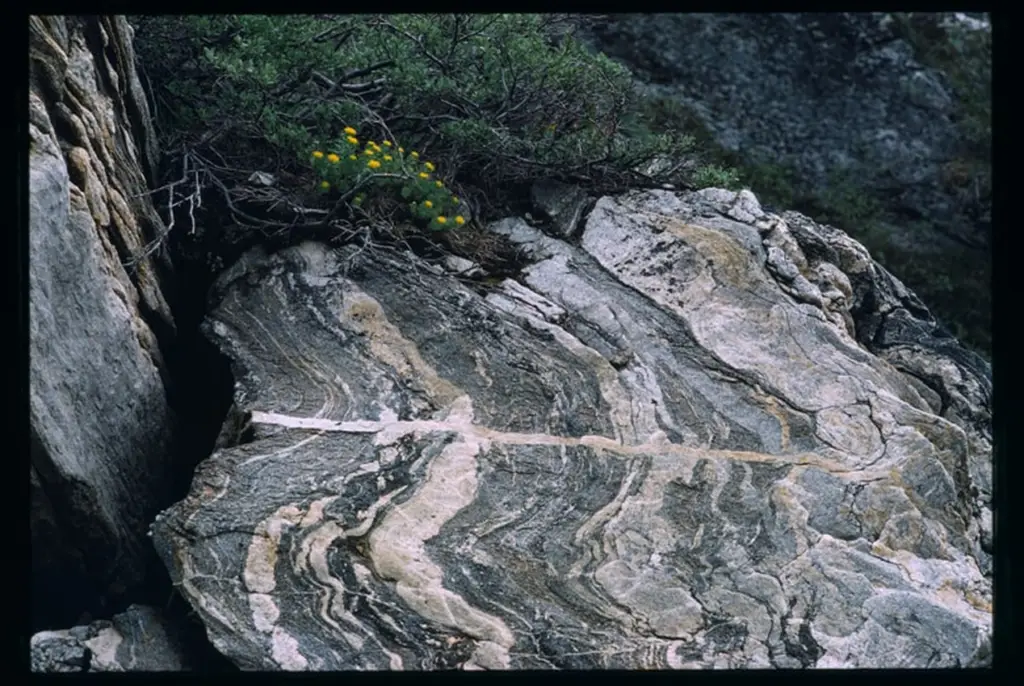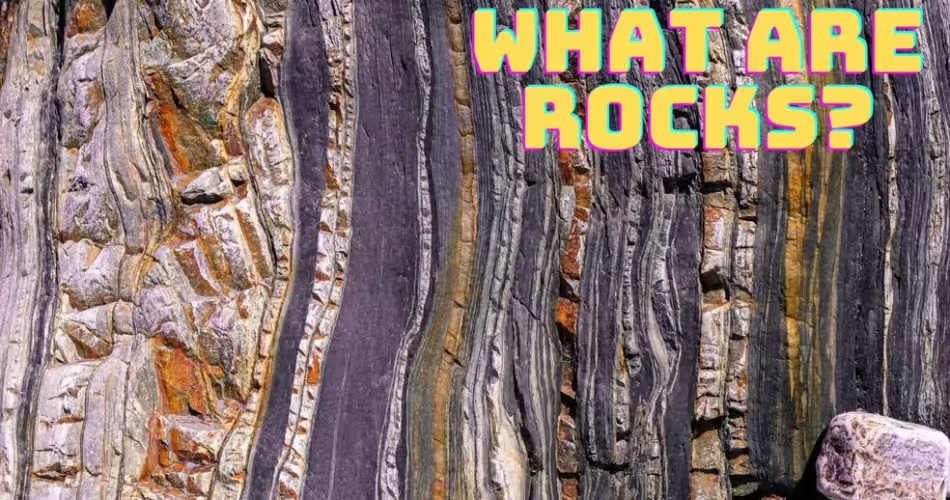This blog contains information about Rocks. In the start, it defines and introduces Rocks in detail. Then it describes the Types of Rocks along with their sub-types. These Types includes Igneous Rocks, Sedimentary Rocks and Metamorphic Rocks. It gives complete Explanation about these Rocks. This blog contains Rocks, Igneous, Sedimentary and Metamorphic Rocks.
What are Rocks?
Rocks are the naturally occurring coherent aggregates on one or more minerals. These aggregates constitute the basic building block of Earth. They are compose of or typically formed recognizable and mappable volumes.
Rocks are hard materials and they are formed by aggregation of different minerals found on the earth or within the earth’s crust. They play a very important role in maintaining the basic structure of the earth and helps in balancing the ecosystems present on the earth.
Rocks provide shelter and habitat for many animals and plants. That is way they play a big role in protecting prey from its hunter and thus provide protection to wildlife. Rocks can be of any size and shape. Some of them are extremely huge and some are extremely small.
Four Processes of Rock Formation:
Following are the processes for Rock Formation:
i. Weathering:
Weathering is a process that is influenced by changing or weather patterns and changes in the physical properties of the environment. It can change or alter the rock because of certain weather changes such as change in temperature, rainfall patterns, environmental pressure on the rocks. The main property of weathering is to break down or dissolves the materials on to the Earth surface. This mostly lead the formation of the rocks in general.
ii. Erosion:
Erosion is the process of washing away of the upper layer of the earth. It may take minerals from one place to another and deposit at the end of its flow. This deposition combines many of the minerals taken away by the water and air through the process of erosion. This may create new rocks or its deposits may add more minerals to the already existing rocks. Erosion is the obvious and common cause of rock formation as it is responsible for transfer of minerals and nutrients from a region to another.
iii. Deposition:
The materials and minerals that erosion takes with it and where they stop, that place makes deposits of certain materials. This process is called as Deposition. It is a process that takes hundred of years to make a rock. Because as we know erosion is a slow but continuous process. When the materials deposits at the same place for years, they combine with each other due to high pressure exerted by upcoming new particles or layers. This process may accelerates due to weather changes.
iv. Compaction:
Compaction is the process in which the soil particles, minerals and nutrients are pressed together with a great environmental pressure. This compaction reduces the pores size between the particles and force them to become a single solid mass. So these different materials reached a location or space with different ways i.e. Soil erosion, weathering etc. When all these particles get extremely combined and compacted, they form a rock in hundreds and thousands of years.
v. Cementation:
Cementation can be defined as a process in which a solid is powdered with new layer of any material from its all sides with passing time. Then the old rock or solid id left inside and the powdered materials forms new layers on it and increase its mass. This is the same phenomenon as we cement our walls by providing complete coverage and then the cement becomes a part of the wall after some time. This process is also a slow process but it play its role in the formation of layers of Rocks.
These are few processes that involves in Rock formation Generally. We study about Igneous, Sedimentary and Metamorphic Rocks in this blog.
Types of Rocks:
As we know that rocks are of different shapes and sizes. We cannot classify them according to their shapes and sizes because their types are uncountable. But it is possible to classify them on the basis of their formation. There are three major types of rocks in the context of their formation:
1.Igneous Rocks:
Igneous rocks are rocks that crystallize from magma, a mobile mass of hot, quasi liquid earth material that is probably generates in the upper asthenosphere or the lithosphere.
Igneous and Metamorphic rocks together comprise more than 90 percent of all rocks in the earths crust. Following are the sub-types of Igneous rocks:
• Intrusive Rocks:
If magma slowly cools and crystallizes well below the surface of the Earth, the resulting igneous rock is called intrusive. Intrusive igneous rocks tend to be coarse-grained that is, individual mineral grains can be seen with the naked eye due to the relatively slow cooling during crystallization. When intrusive igneous rocks such as granite are exposes on the surface, we may conclude that erosion have remove the material that originally cover them. Intrusive igneous rocks are generally strong and have a relatively high unconfined compressive strength. The strength of a granite depends upon its grain size and degree of fracturing.
• Extrusive Rocks:
Igneous rocks that crystallize on or just below the surface of the Earth, we can call them as extrusive. They are form by lava (magma that flows from a volcano in a molten state) or from pyroclastic debris (magma that has solidifies rapidly as it blow out of a volcano). Solidified lava flows also may have subterranean voids known as lava tubes, which may collapse from the weight of the overlying material or carry large amounts of groundwater, either of which can cause problems during the planning, design, or construction phases of a project. Because extrusive rocks vary considerably in their composition, it is difficult to make generalizations about their suitability for specific uses; careful field examination is always necessary before large structures are build on such rocks.

2.Sedimentary Rocks:
Sedimentary rocks, which comprise about 75 percent of all rocks which expose at the surface of the earth, form when sediments are transports, deposits, and then lithify by natural cement, compression or other mechanism.
There are two types of sedimentary rocks: detrital sedimentary rocks, which form from broken parts of previously existing rocks and chemical sedimentary rocks, which are deposited when chemical or biochemical processes cause solid materials to form from substances dissolved in water.
• Detrital Rocks:
Detrital sedimentary rocks are classified according to their texture as shale, sandstone, and conglomerate. Shale is by far the most abundant, accounting for about 50 percent of all sedimentary rocks. It is the finest textured of the three detrital rock types, makes up of clay- and silt-sized particles. There are two types of shale: compaction shale and cementation shale. Compaction shale is together primarily by molecular attraction of the fine clay particles. It is a very weak rock and can cause several environmental problems. First, depending upon the type of clay, Second, depending upon the bonding between its depositional layers, or bedding planes. Depending upon the degree and type of cementing material, cemented shale can be a very stable, strong rock suitable for all engineering purposes.
• Sandstones and Conglomerates:
Sandstones and conglomerates forms by coarse-grain and make up about 25 percent of all sedimentary rock. Sand-sized particles making up sandstone are 0.076 to 2 mm in diameter. Conglomerate contains gravel-sized particles greater than 2 mm in diameter. Depending on the type of cementing material, these rocks may be very strong and stable for engineering purposes. Common cementing materials are silica, calcium carbonate, iron oxide, and clay. It is always advisable to evaluate carefully the strength and stability of cementing materials in the detrital sedimentary rocks.
• Chemical Sedimentary Rocks:
Chemical sedimentary rocks are classified according to their mineral composition so as they include halite (rock salt, NaCl), gypsum (hydrous calcium sulfate, CaSO4 2H2O), and limestone which is composed mostly of the mineral calcite (calcium carb). Human use and activity generally do not mix well with limestone. Although this rock may be strong enough to support construction, it weathers easily to form subsurface cavern systems and solution pits. In limestone areas, most of the streams may be divert in to subterranean routes, where they easily become pollutes by contaminated runoff entering the groundwater. This blog contains details about Igneous, Sedimentary and Metamorphic Rocks.

3.Metamorphic Rocks:
Metamorphic rocks are changed rocks. Heat, pressure, and chemically active fluids produced in the tectonic cycle may alter the mineralogy and texture of rocks, in effect producing new rocks.
There are two types of metamorphic rocks. In metamorphic rocks, the elongated or flat mineral grains have a preferential parallel alignment, producing a banding of light and dark minerals. Non-foliated metamorphic rocks have no preferential alignment or segregation of minerals. Foliated metamorphic rocks, such as slate, schist, and gneiss, have a variety of physical and chemical properties, so it is difficult to generalize about the usefulness of such rocks for engineering projects.
• Slate
Slate (a fine- grained metamorphic rock formed from metamorphism of a shale or basalt) is generally an excellent foundation material. It was once used for constructing chalkboards for schools and beds for pool tables. We can use it for roofing material and decorative stone counters.
• Schist
Schist (a coarse-grained metamorphic rock, when composed of soft minerals, is a poor foundation material for large structures.
• Gneiss
Gneiss (a coarse-grained, banded metamorphic rock,, is usually a hard, tough rock suitable for most engineering purposes.
Important non-foliated metamorphic rocks include quartzite and marble. Quartzite, a metamorphosed sand- stone (with quartz grains), is a hard, strong rock suitable for many engineering purposes so as the engineering properties of marble (composed of the mineral calcite)are similar to those of its parent rock (limestone), and cavern systems and surface pits resulting from chemical weathering (dissolving) of the rock occurs. This blog contains information about Igneous, Sedimentary and Metamorphic Rocks in detail.

Metamorphic Rocks
To read about more topics, click the links below:


Comments